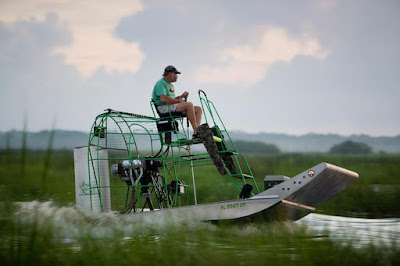You've read what I've had to say about these rods both here on this Blog and on my website. Now read some from Rick Pope himself-
TFO Impact Fly Rods
Casting, Fishing, Fighting
by Rick Pope- Chairman- Temple Fork Outfitters
Finally … it is time to get out on the water! Those of you who have seen, heard of or even cast our new Impact Series of rods can likely appreciate that they are unique among all the different series of TFO rods. The combination of engineering and materials resulted in a long action with a very small diameter blank and lightning fast recovery. While these are great marketing attributes, we want you to know exactly what they will do for you to enhance your success and enjoyment in fishing them.
Why a long action rod? - Unlike most TFO fast or medium fast actions which load and bend primarily towards the tip, Impact rods will bend much deeper for a given amount of resistance. This shortens the effective length of the lever which can greatly reduce the fatigue of repetitively casting a fast action rod. Think about it this way … if you put an ounce of weight on the end of a ruler, your lever is simply 12” and it is easy to hold horizontal. Put that same ounce on a yard stick – making the lever 36” and it becomes a challenge to hold for any period of time.
Recovery speed - In our rod action terms, a fast action rod is a longer lever and our Impact action is a shorter lever. Faster action rods mitigate some of the stabilization issues when a blank is engineered with lower modulus materials as there is simply less blank load to stabilize. Traditional lower modulus materials, when engineered as a longer action rod, typically suffer in recovery (think glass). The higher weight to stiffness of lower modulus blanks wastes stored energy, or load, as some energy must be retained in order to stabilize the blank. Higher modulus, or lower weight to stiffness, discharges a much greater amount of stored energy and stabilizes much faster which is exactly what the Impact Series does.
Casting – “Let the rod do the work” Your job is to bend the rod and the rod’s job is to straighten (thanks Ed Jaworowski). Store more energy by bending the rod more. Bend the rod more by extending your stroke length for longer casts (a hint for George Anderson). If your stroke is short, as in the old school 10 o’clock – 2 o’clock length, you’ll see tailing loops start to form as you attempt more distance. Just lengthen your stroke and again “let the rod do the work”. You’ll be amazed at the ease with which distance casts can be made.
Further, one of the most important practical fishing casts is a roll cast. Even outside trout environments with limited back cast room, a roll cast pick-up is an asset. Impact rods are superb roll casting tools. Just form your d-loop with an appropriate anchor point (end of the fly line about a rod length away). You will find that the Impact long action design bends deeper through your delivery stroke and better discharges this stored energy when you stop.
Fishing & Fighting – or better stated, now that your Impact rod has delivered the fly, hooking fish with a long action rod will be easy. Big hooks and hard mouthed fish need a butt angle nearer zero. A “strip strike” works best – just set the hook with your hauling hand. Small hooks and light tippet are easily set with higher angles, and a very long shock absorber helps prevent light tippet break – offs … a great benefit.
Fighting bigger fish with heavy tippet will be easy as well. While the shorter leverage is an advantage, you’ll still need to further manage lever length with fighting angle (rod butt to fish). As an example, if your rod butt/reel seat is pointed straight up, you’re at 90 degrees. Appropriate fighting angles for Impact rods decline as tippet strengths go up, so apply more pressure to a fish with heavier tippet by using fighting angles less than 45 degrees. A 15 degree fighting angle with 20# tippet is about right. Protect lighter tippets with fighting angles greater than 45 degrees.
In summary – we are particularly proud of this family of rods as they are easy to load, very efficient at discharging stored energy, and overall, a delight to fish. We believe you’ll agree that the versatility of an Impact rod as a fishing and as a fish fighting tool are the great benefits of this type of action. If you need help making a rod decision, just call us or email us. For more on casting stroke length and fish fighting angles, check out Ed and Lefty’s “Complete Cast” DVD and whatever tool you select, we hope you enjoy what should be a great fishing season.

































